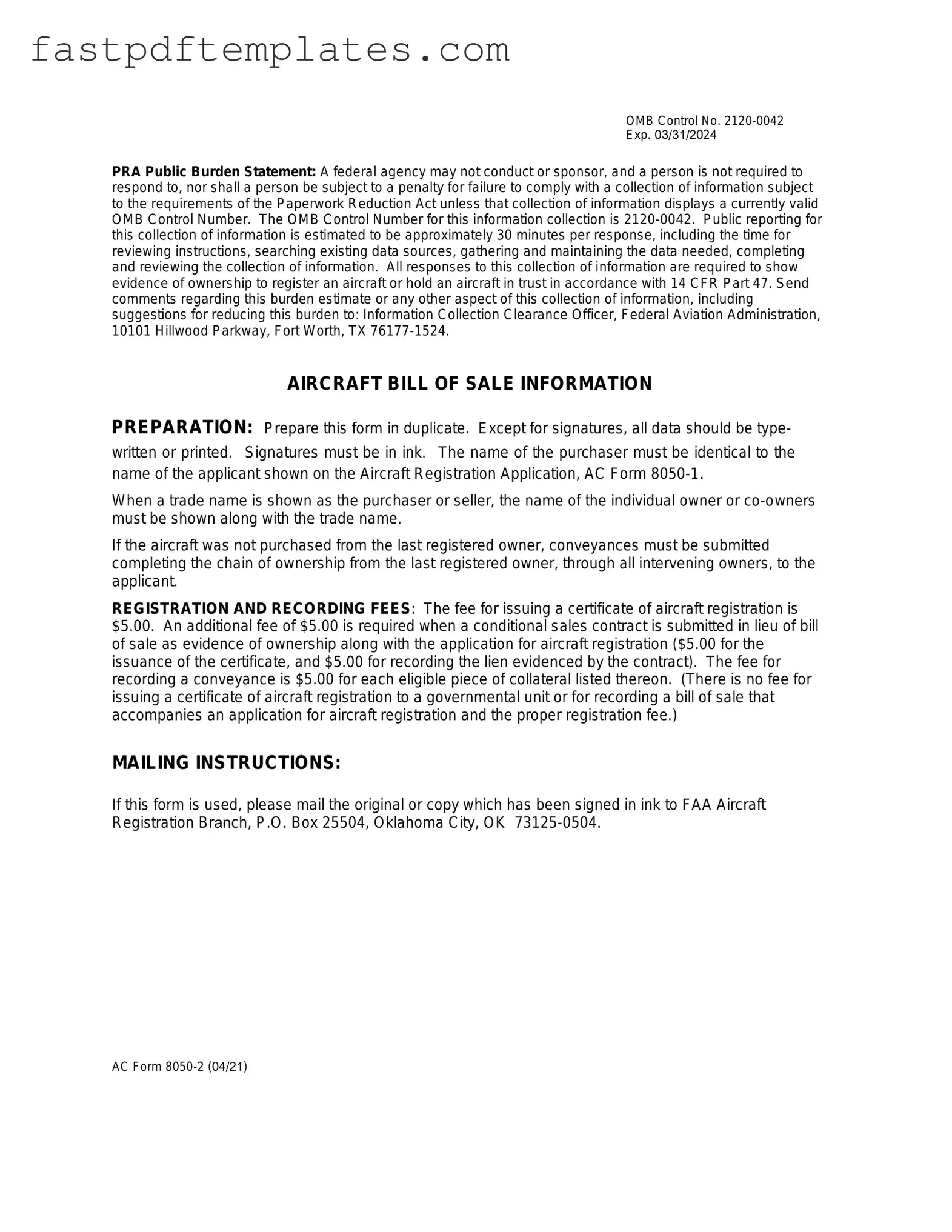The Aircraft Bill of Sale AC 8050-2 form is similar to the Vehicle Bill of Sale. Both documents serve as proof of transfer of ownership from one party to another. They typically include details about the seller and buyer, along with a description of the vehicle or aircraft being sold. This ensures that the transaction is documented and can be referred to in the future if necessary. Just like the Aircraft Bill of Sale, the Vehicle Bill of Sale is often required for registration purposes with state authorities.
Another document that resembles the Aircraft Bill of Sale is the Boat Bill of Sale. This form is used when a boat is sold, capturing essential information about the buyer, seller, and the boat itself. Both documents help protect the rights of both parties involved in the sale. They also serve as legal evidence of the transaction, which can be useful for tax purposes or disputes that may arise later.
The Real Estate Purchase Agreement shares similarities with the Aircraft Bill of Sale as well. This agreement outlines the terms of a property sale, including the parties involved, the property description, and the sale price. Like the Aircraft Bill of Sale, it serves to formalize the transfer of ownership and provides a clear record of the transaction. Both documents are often required for legal and financial reasons, ensuring that all parties understand their rights and obligations.
The Personal Property Bill of Sale is another document that parallels the Aircraft Bill of Sale. This form is used for the sale of personal items, such as furniture or electronics. It includes similar details about the seller, buyer, and the item being sold. Both documents act as a receipt and proof of ownership transfer, making it easier for buyers to claim their property and for sellers to document the sale.
The Mobile Home Bill of Sale is akin to the Aircraft Bill of Sale in that it facilitates the transfer of ownership of a mobile home. This document includes information about the mobile home, the buyer, and the seller. Just like the Aircraft Bill of Sale, it provides a clear record of the transaction and may be required for registration or titling purposes.
The Motorcycle Bill of Sale is also similar to the Aircraft Bill of Sale. This document is used when a motorcycle is sold and includes important details about both the buyer and seller, as well as a description of the motorcycle. Both forms serve to protect the interests of both parties and provide a legal record of the transaction.
The RV Bill of Sale shares characteristics with the Aircraft Bill of Sale as well. This document is specifically for the sale of recreational vehicles. It captures the necessary details about the RV, the buyer, and the seller. Both documents serve as proof of ownership transfer and are often required for registration and titling with state agencies.
The Equipment Bill of Sale is another document that resembles the Aircraft Bill of Sale. This form is used when selling equipment, such as machinery or tools. It includes similar information about the seller, buyer, and the equipment being sold. Both documents provide a clear record of the transaction and help protect the rights of both parties involved.
The Farm Equipment Bill of Sale is also similar to the Aircraft Bill of Sale. This document is specifically for the sale of agricultural equipment. It includes details about the buyer, seller, and the equipment itself. Like the Aircraft Bill of Sale, it serves as a legal record of the transaction and can be important for tax and ownership verification purposes.
Lastly, the Livestock Bill of Sale is akin to the Aircraft Bill of Sale. This document is used when livestock is sold and includes information about the buyer, seller, and the animals being transferred. Both documents provide a legal framework for the transaction, ensuring that all parties understand their rights and responsibilities.

